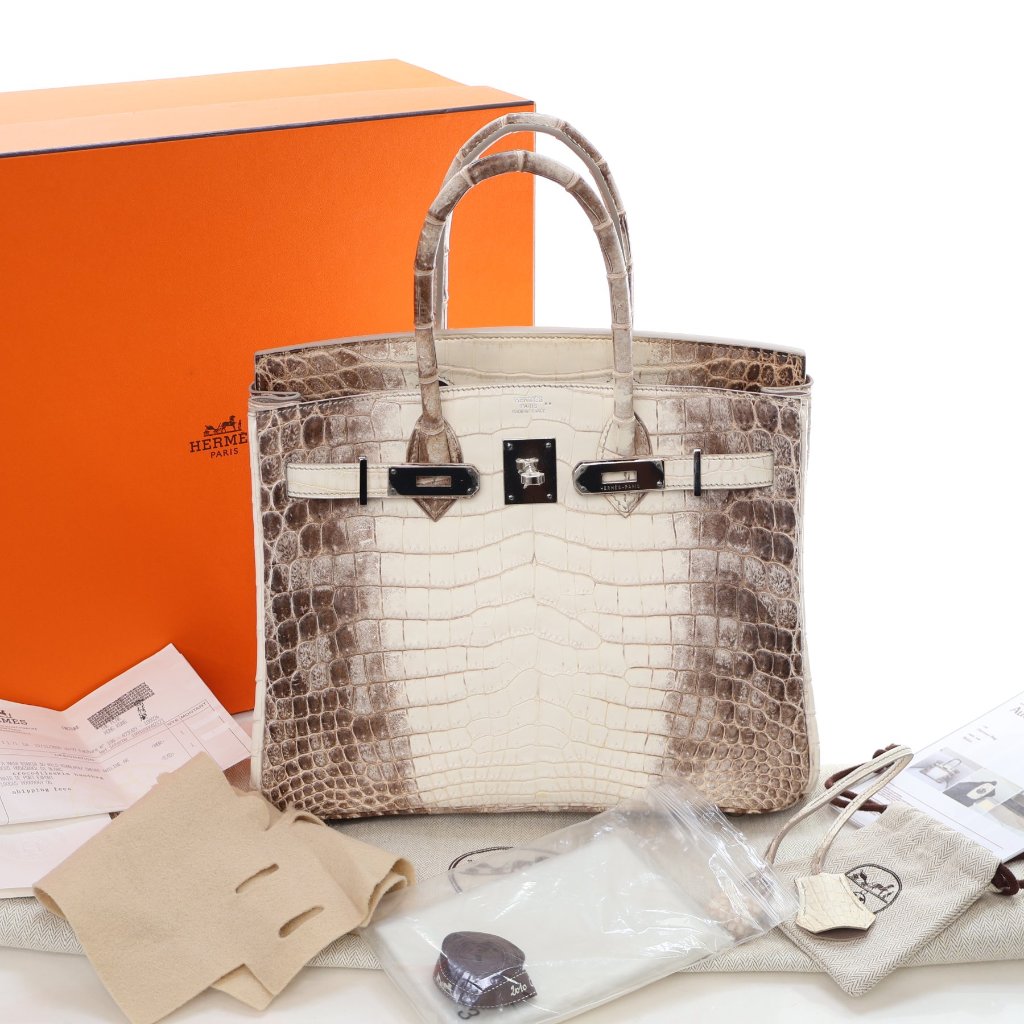In 2022, a single handbag sold for over $450,000 USD at auction. Not just any bag—a Diamond Hermès Himalayan Birkin 30. The room erupted. Collectors worldwide watched as one of the most expensive Hermès Birkins ever sold shattered expectations once again.
But what makes the Hermès Himalayan Birkin command prices that rival luxury cars and investment-grade art? The answer goes far beyond the signature gradient or the crocodile skin. This bag represents the absolute pinnacle of craftsmanship, rarity, and collecting—a piece so exclusive that even billionaires have to get creative with obtaining one.
If you’re building your designer collection or simply fascinated by what defines true luxury, understanding the Himalayan Birkin’s story reveals everything about value, artistry, and what it means to own something genuinely extraordinary.
The Provenance: From Mountain Peaks to Fashion Icon
Origins of the Process: The 1990s Lead Up
The Himalayan’s story doesn’t begin in 2008 when it officially first debuted. It starts decades earlier, when Hermès experimented with something radical for the 1990s luxury market.
In the early 1990s, Hermes developed a glossy ombré crocodile finish, called Natura Vert Celadon, and debuted it on their already iconic Kelly. This green-to-brown gradient recalls early 20th-century experiments with exotic leathers, when artisans first attempted to strip natural pigment from crocodile skins—a notoriously difficult process in the Edwardian era. Brands like Hermès, already established at the time, were among the early houses testing these methods, marking some of the first trials in controlled exotic leather coloration. Around the turn of the millennium, Hermès created fewer than 10 of these Kelly bags for private sale.
Could Hermès create a gradient so breathtaking that collectors would prize the natural variation over uniform color? The Vert Celadon Natura became a stepping stone to the proof of concept.
Birth of the Modern Himalayan (2008)
This particular exotic material’s name comes from the world’s most majestic mountain range. The gradient mirrors the snow-capped Himalayan peaks, transitioning from smoky grey sides to pristine white at the center. Each bag tells a slightly different story through its unique ombré pattern and some versions appear more intense than others.
By the late 2000s, Hermès refined this proprietary process into something extraordinary, and thus the modern Blanc Himalayan Birkin was born. Debuting in 2008 in the 30cm size, this rare example of luxury craftsmanship was initially kept secret and sold only to top collectors and VIP clients. Soon, the 35cm followed in 2009 followed by the 25cm in 2012, aiming to capture the desirability of its range of sizes.
The 2010 Runway Moment That Changed Everything
While this iteration of the bag itself remained under wraps for several years, everything shifted when Jean-Paul Gaultier sent a Himalayan Birkin down the Hermès Spring 2010 runway. Suddenly, the secret was out and the fashion world vied to get their hands on this exceptionally rare piece. What had been whispered about in VIP salons became the ultimate status symbol overnight. The Himalayan wasn’t just another Birkin—it was the Birkin. Collectors who had never heard of it suddenly needed one, a trend that has not subsided since.

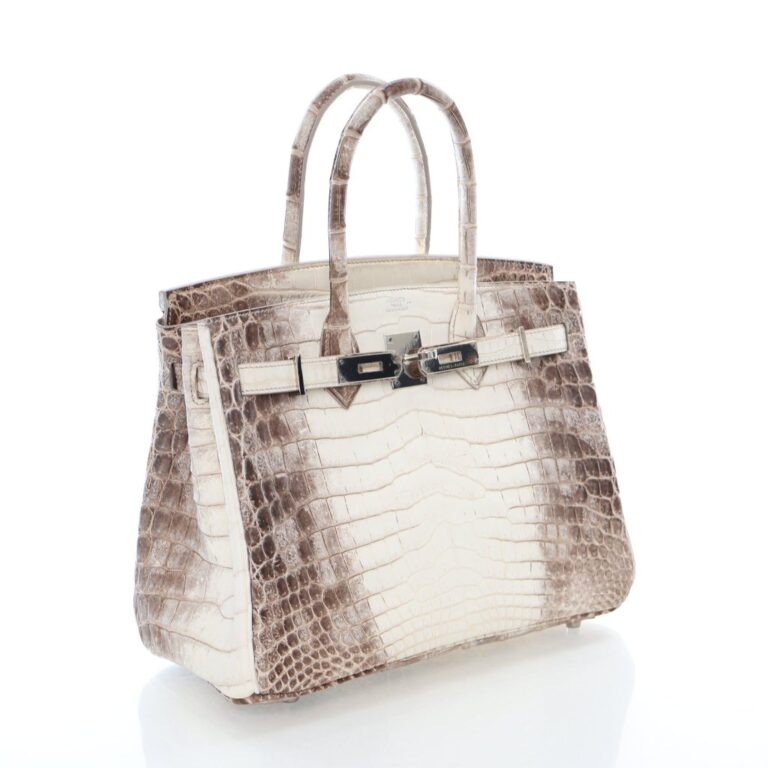
What Makes a Bag “Himalayan”?
The Niloticus Crocodile Foundation
Not all crocodile leather qualifies for Himalayan treatment. These bags are crafted exclusively from Niloticus crocodile, sourced from the Nile River region of Africa.
Niloticus features smaller, symmetrical scales compared to alligator or Porosus crocodile. The skin’s natural qualities allow for the signature gradient that defines the Himalayan. However, this leather requires careful maintenance—it’s sensitive to moisture and must be stored in humidity-controlled environments.
You can identify Niloticus by the special dot mark (・・) stamped next to the Hermès foil logo at the front of the bag under the flap.
The Meticulous Gradient Process
Creating the Himalayan gradient isn’t about adding dye—it’s about revealing what’s already there. Hermès artisans hand-buff and finish the naturally lighter crocodile skin to emphasize its organic color variation.
The process is painstaking. Each bag requires extensive craftsmanship to achieve the perfect transition from the pearly white center to the smoky grey sides. Some areas receive more attention than others to create depth and dimension.
This explains why retail prices start around $50,000 USD for standard hardware versions, climbing to approximately $300,000 USD for diamond-encrusted editions.
Why Every Himalayan Is Unique
An interesting attribute to this unique process means that no two Himalayan Birkins look identical. Some feature stark contrast—dark gray sides with brilliant white centers. Others show a softer ombre with a lighter gray and more even gradient across the entire bag. Collectors have preferences. Some prize dramatic two-tone effects. Others prefer subtle, lighter tones throughout.
Even the base matters. Most Himalayans have rectangular scales along the bottom, but exceptional pieces feature symmetrical belly scales like those on the front and back panels. A centered base commands premium prices among serious collectors.
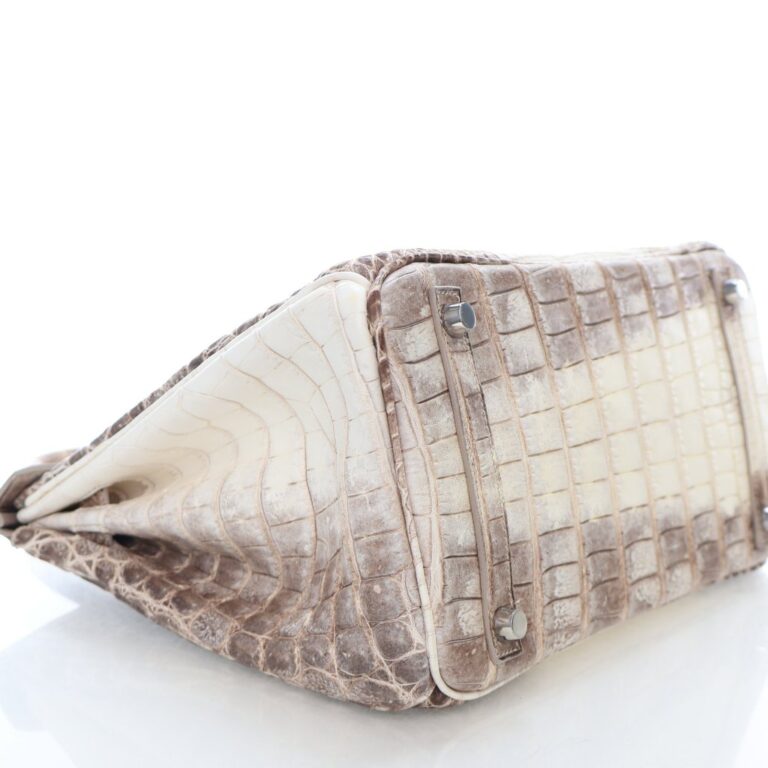
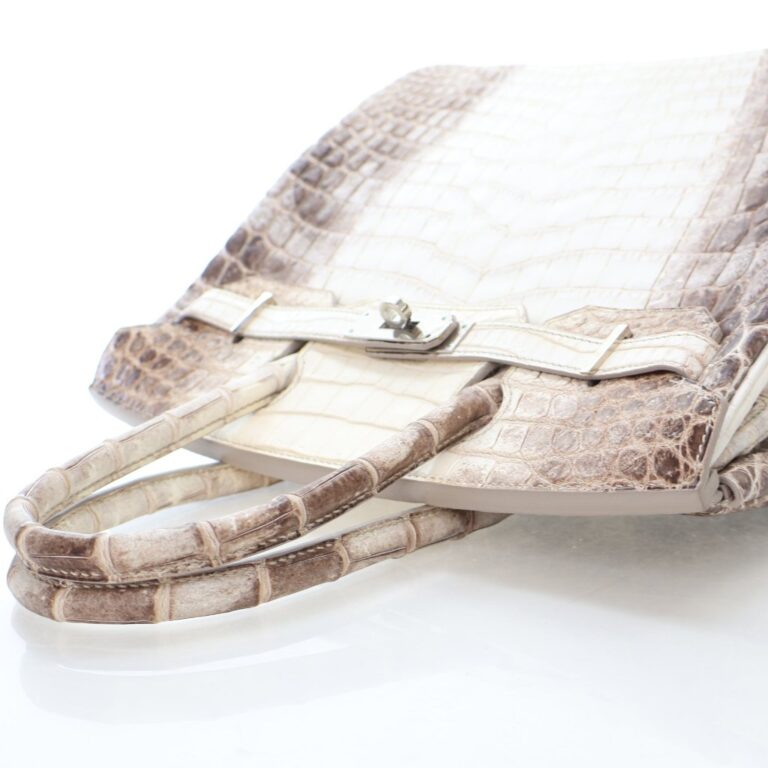
Himalayan Iterations: Beyond the Birkin
The Birkin Family (25, 30, 35)
While “Himalayan Birkin” sounds singular, there are actually three main sizes—each with its own collector following.
The Birkin 25, released in 2012, has become the most sought-after size. It balances portability with presence. Recent pristine examples at auction command close to $200,000 USD, with diamond versions reaching $336,000 USD in February 2025.
The Birkin 30 remains the most common Himalayan on the secondary market, accounting for nearly 40% of all auction sales. It’s large enough for daily use yet elegant for evening. Pristine examples sell around $150,000 USD, while older pieces with visible wear settle closer to $100,000 USD.
The Birkin 35 offers maximum space but less collector demand. Despite its rarity, it typically sells for less than smaller sizes — a reversal of retail pricing trends, as the resale market tends to value smaller sizes more highly.
The Rare Himalayan Kelly
In 2013, Hermès extended the Himalayan treatment to the Kelly range. The Kelly 28 became particularly coveted among collectors who prefer the bag’s more structured silhouette.
Himalayan Kellys are significantly rarer than Birkins. Auction prices peaked in 2022 with sales over $380,000, though prices softened to the $140,000-$230,000 USD range through 2024. A September 2025 sale of a Gris Cendré Kelly 28 at 762,000 HKD suggests renewed market strength.
The Kelly 25, 28, and 32 sizes all exist in Himalayan, with the Kelly 35 introduced more recently. Just like with Birkins, smaller sizes command higher premiums.
The Ultra-Rare Gris Cendré Variant
Most Himalayans feature the classic grey-to-white gradient. But there’s an even rarer version that collectors dream about: the Gris Cendré Himalayan.
True Gris Cendré Himalayans transition from grey centers to brown sides—an earthy, dusky finish that’s approximately 20 times rarer than standard Himalayans. These bags feature Fauve brown interiors that enhance their warm, mountain-inspired colorway.
Very few Gris Cendré Birkins have appeared at auction. Gris Cendré Kellys are even more elusive—none had sold at major auction houses until recent years. Sotheby’s sold a Gris Cendré Plume in 2022, but for collectors seeking the Birkin or Kelly, patience is essential.
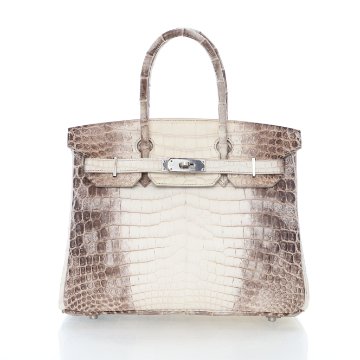
Hardware That Elevates Rarity
Palladium: The Classic Choice
The majority of Himalayan Birkins and Kellys feature palladium hardware—a silvery-white metal that complements the bag’s icy gradient beautifully.
Authentic Himalayans only come with palladium or diamond-encrusted white gold hardware. Any other hardware finish should immediately raise authentication concerns.
Palladium versions represent the “entry point” for Himalayan collecting (if $50,000+ retail can be called entry-level). These bags showcase the gradient without the distraction of gemstones, letting the crocodile speak for itself.
Diamond Hardware: Wearable Fine Jewelry
Then there’s the Diamond Himalayan—often called the “Holy Grail of Holy Grails.”
These extraordinary pieces feature 18K white gold hardware encrusted with VVS clarity, F-color diamonds. The lock alone can contain over 40 diamonds totaling more than 1.6 carats. Across the entire bag—including the touret, pontets, and plaques de sanglons—over 200 diamonds create a total of 8-10+ carats depending on the size.
Diamond Himalayans retail around $250,000 to $300,000 USD, but secondary market prices soar much higher. These aren’t just handbags—they’re investment-grade fine jewelry you can carry.
How Hardware Affects Value
The diamond premium is substantial. While palladium Himalayans sell between $100,000-$200,000 USD at auction depending on size and condition, diamond versions consistently command $250,000 to $450,000+ USD.
As with any investment, it’s important to understand that while historical trends indicate an overall increase in value, prices can fluctuate and move in cycles much like the stock market.
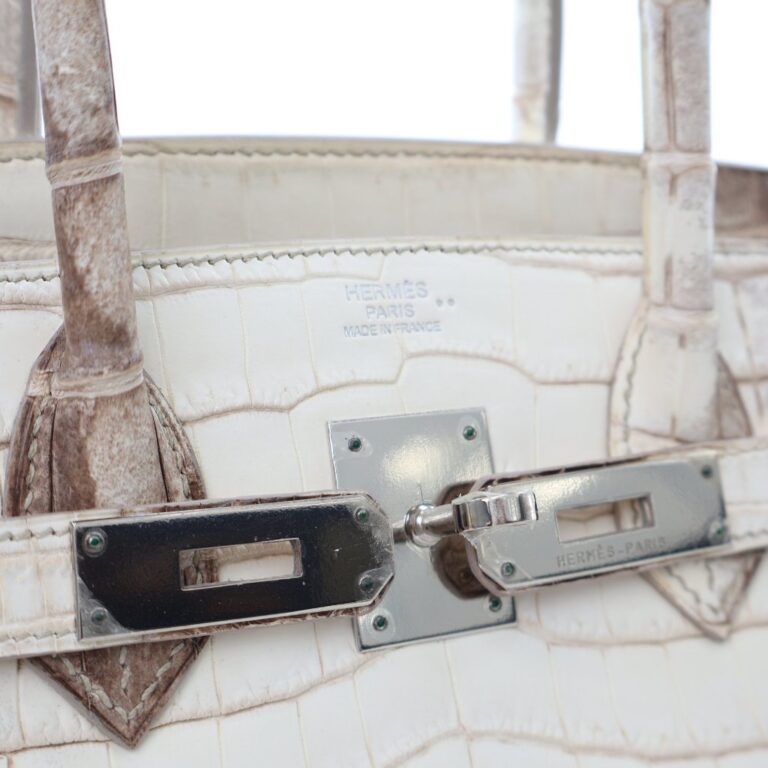
Why Size Matters for Collectors
The Birkin 25: Most Sought-After
Smaller isn’t just cuter—it’s more valuable. The Birkin 25 Himalayan consistently outperforms larger sizes at auction.
This mirrors broader luxury trends. Today’s collectors prefer compact, versatile pieces over statement sizes. The Birkin 25 works for both daytime errands and evening events, making it the most practical despite being the smallest.
Pristine Birkin 25 Himalayans in recent condition continue selling close to $200,000 USD. Six Himalayan bags made the top 10 most expensive Hermès bags sold in 2024, showing sustained collector demand.
The Birkin 30: Most Common Yet Still Iconic
The Birkin 30 strikes the perfect balance between space and elegance. It’s large enough for daily essentials yet refined enough for any occasion.
Because the 30cm was the first size released and has been in production longest, it’s the most frequently available on the secondary market. This relative abundance (and we’re talking dozens, not thousands) means prices settle slightly lower than the 25cm.
Still, “lower” is relative. A pristine Birkin 30 Himalayan with recent Hermès date stamps sells around $150,000 USD. That’s triple the price of many luxury cars.
The Birkin 35: Rare But Less Desirable
Here’s where rarity and demand diverge. The Birkin 35 Himalayan is technically rarer than the 30cm, yet it typically sells for less money.
Why? Size preferences have shifted. Modern collectors gravitate toward more compact proportions. The 35cm’s generous dimensions make it less versatile for today’s luxury lifestyle.
Older Birkin 35 Himalayans with noticeable wear can sell closer to $100,000 USD—still astronomical, but notably less than pristine smaller sizes. Condition matters enormously, especially on these larger pieces where wear shows more readily.
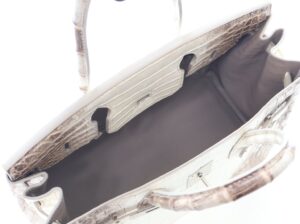
Auction Dominance: A Price History
Record-Breaking Sales (2020-2022)
The pandemic luxury boom sent Himalayan prices into the stratosphere. Wealthy collectors, stuck at home with disposable income, turned to handbags as alternative investments.
Sotheby’s has sold nearly $10 million USD in Himalayan bags since 2021, a staggering figure that underscores the model’s extraordinary global demand. In September 2022, a Birkin 25 Himalayan sold for €252,000 (approximately $280,000 USD) at the market’s absolute peak.
Diamond versions performed even better. The 2022 sale of a Diamond Himalayan Birkin 30 for over $450,000 set records that still stand. These weren’t anomalies—they represented genuine market appetite.
Market Correction (2023-2024)
Like all asset classes, Himalayan prices eventually cooled. Through 2023 and 2024, prices drifted lower as economic uncertainty dampened luxury spending.
Birkin 25 Himalayans that commanded $280,000 USD at peak now sell closer to $187,500-$200,000 USD for pristine examples. The Birkin 30 stabilized around $150,000 USD. Kelly 28 Himalayans, which exceeded $200,000 USD in 2023, adjusted to $128,000-$156,000 USD by late 2024.
The correction wasn’t catastrophic—these bags still vastly outperformed their retail prices and held value better than many traditional investments during the same period.
Investment Performance vs. Traditional Assets
Despite recent softening, Himalayan Birkins have appreciated an average of 14.2% annually since their introduction. That outpaces many stock market indices over the same timeframe.
Experts note that some rare Hermès pieces, particularly Himalayans, have outperformed traditional investments like gold or blue-chip stocks. The key is condition, provenance, and patience.
Looking toward 2025, analysts expect prices to stabilize rather than decline further, assuming the global economy remains relatively stable. For long-term collectors, the current market presents potential opportunities.
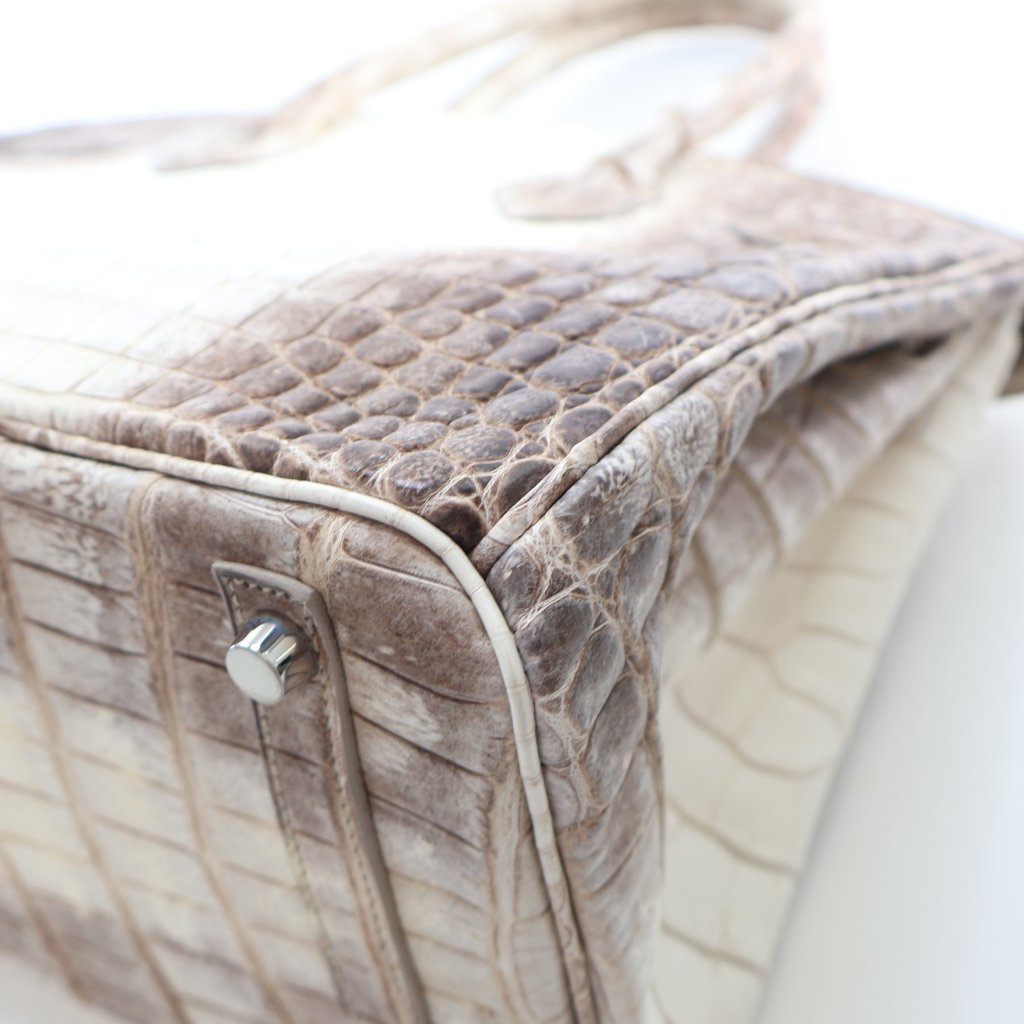
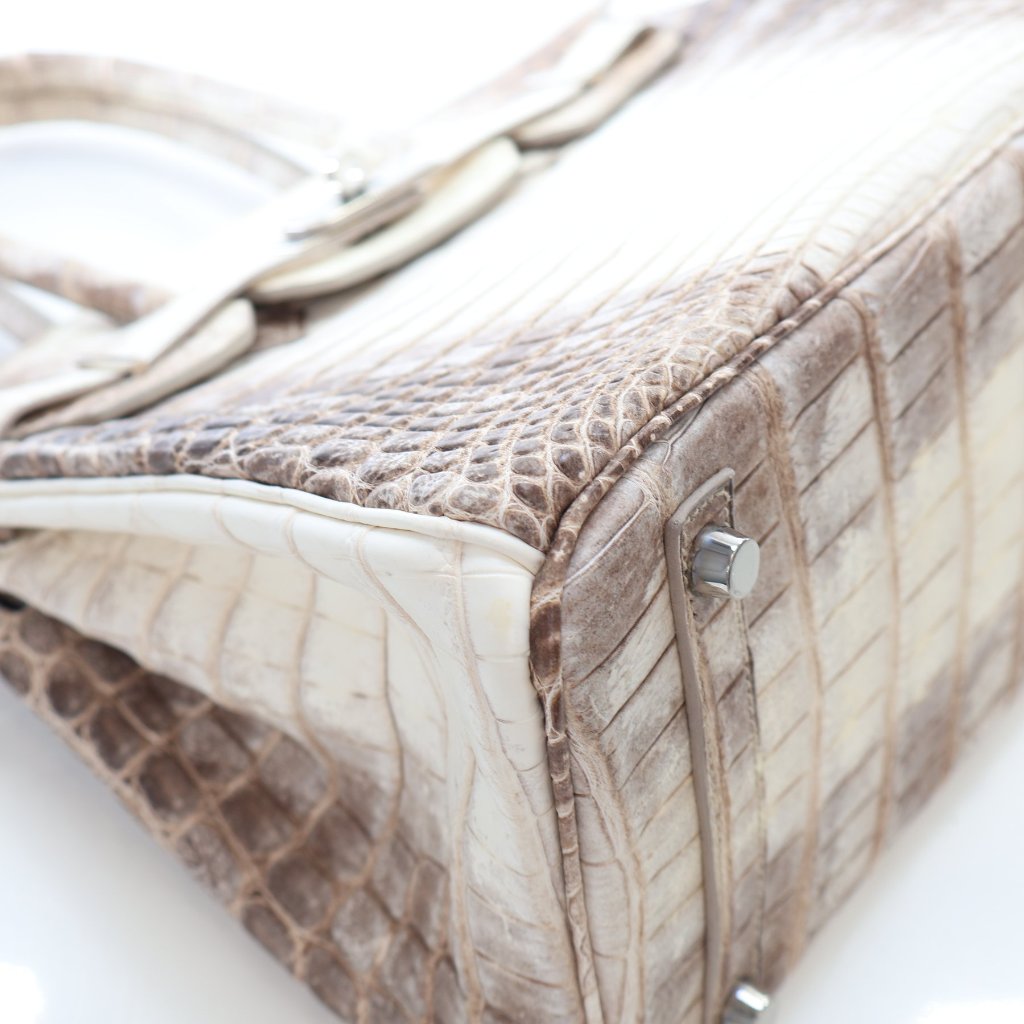
Can I Actually Buy a Himalayan Birkin?
Here’s the honest answer: it’s extraordinarily difficult.
The Boutique Route: Building a relationship with Hermès takes years and significant spending. You can’t walk into a boutique and request a Himalayan. These bags are offered exclusively to VIP clients with substantial purchase histories.
Even then, it’s not guaranteed. Hermès controls production tightly, creating only a limited number each year. Your sales associate must champion your case, and you must be patient—sometimes for years.
The Secondary Market: This is where most collectors source their Himalayans. Reputable resellers, auction houses like Sotheby’s and Christie’s, and authenticated luxury platforms offer opportunities to purchase without the boutique waiting game. The trade-off? Significant premiums over retail. A Himalayan that might retail for $50,000 USD (if you could get one) sells for $100,000-$200,000 USD on the secondary market depending on size, condition, and hardware.
For collectors in Canada and worldwide, trusted authentication partners make secondary market purchases safer. Always verify provenance, request original receipts when available, and insist on third-party authentication.
The Bottom Line
The Hermès Himalayan Birkin isn’t just a bag—it’s wearable art, investment-grade luxury, and a masterclass in exclusivity. From its 1990s Natura origins to today’s auction dominance, the Himalayan represents everything that makes luxury collecting compelling.
Whether you’re drawn to the meticulous crocodile gradient, the rarity of production, or the proven investment performance, the Himalayan sits alone at the apex of handbag collecting. It’s a piece that transcends trends, maintains value, and instantly identifies its owner as someone who understands true luxury, and there is nothing quiet about it.
For those building designer collections, the Himalayan remains the ultimate aspiration—a piece that rewards patience, research, and commitment to quality over everything else.
Check back for new updates on developments in the world of Luxury here at Luxe Du Jour.

